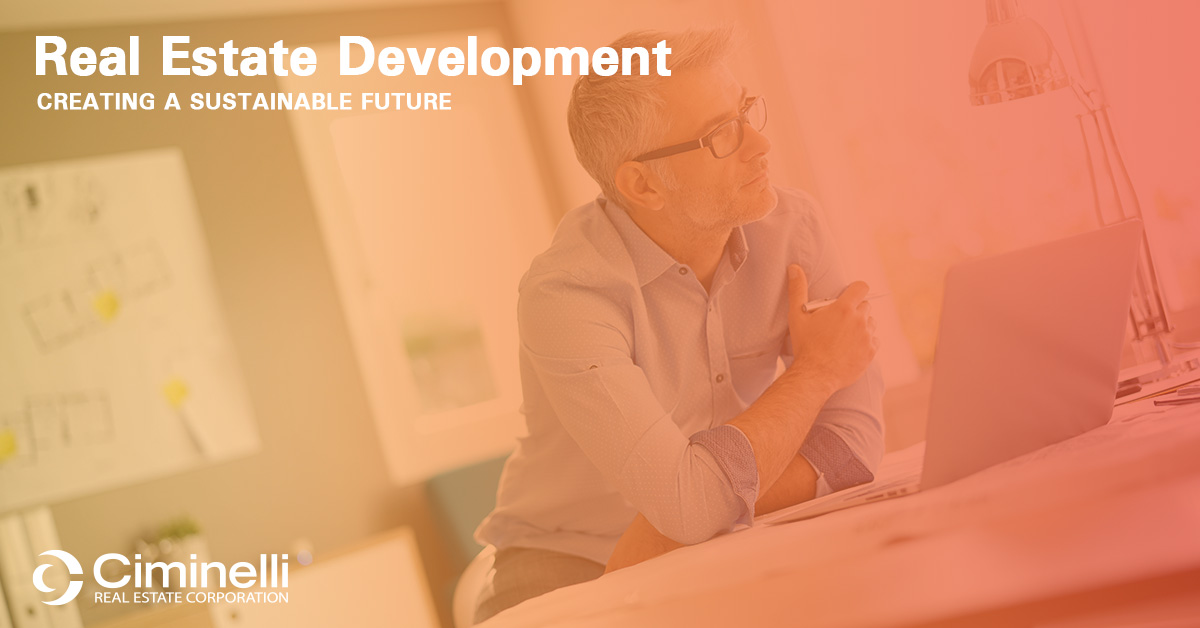
Over time, commercial real estate development has been guided by many principles of design, function, and finance. There has been an increasing emphasis on environmental, social, and governance (ESG) initiatives shaping the next generation of development projects. Demand for these initiatives and their outcomes is driven by investors and communities impacted by the project, so developers must balance the needs of surrounding communities, the environment, building tenants, and ownership to achieve success in their sustainability practices.
Successful Sustainable development incorporates a multi-faceted approach to development that includes stewarding environmentally sensitive sites, proactively remediating brownfields, bringing underutilized properties a higher and better use, engaging the surrounding community, nurturing strategic partnerships, and leading the way in mobility options. Successful projects look for opportunities to invigorate the surrounding environment, support transportation and accessibility needs, offer unique amenities to promote health and wellness, and produce high-quality environments that are conducive to work and play.
What is sustainability in real estate development?
For our purposes, we typically focus on the practices of designing, building, and managing projects in a way that reduces their environmental impact, creates social and economic benefits, and promotes growth for the surrounding community. Within the commercial real estate industry, the long-term success of projects is often viewed through these filters to understand and measure their sustainability.
How can real estate developers make an impact?
Developers can implement a variety of green practices to enhance the sustainability of a project. Some of these practices include using green materials, optimizing efficiency of the building, and emphasizing community engagement.
The design phase of development presents the greatest opportunity to enhance the sustainability of the project. The overall design will have a significant impact on the long-term usefulness of the space, but it also has a substantial environmental impact, and can affect the community that surrounds it. Planning and designing a sustainable project includes considering the physical design and the environmental impact of building systems, parking, building materials, and more. Depending on the overall goals of the project, developers may pursue different green building certifications, such as LEED (Leadership in Energy and Environmental Design). LEED Certification is among the most widely recognized sustainability and leadership achievement around the world and informs all building types including new construction and adaptive reuse.
One of the most common ways to enhance sustainability of a project is to incorporate “green” building materials. Thanks to advances in technology these specialty materials have become more cost effective and widely available. In addition to building materials, the systems powering today’s developments are designed with energy efficiency and emissions in mind.
Whether the project is new construction or a reuse of an existing building, developers can optimize efficiency through the equipment, operations, and controls used throughout the project. Energy efficient solutions may include LED lighting, HVAC systems, hot water distribution systems, high efficiency glass windows, and energy efficient appliances. Alternative energy sources like solar can further reduce the environmental impacts of a building. These measures are not only beneficial to the impact the building can have on the environment, but they can offer cost savings in the long run.
In addition to the environmental metrics of sustainability, the social and economic connections made through the project also have a significant impact. Designing a project that endures time means building flexibility into the plans from the earliest stages. The lifecycles of building materials and systems are an obvious starting point, but the overall use or re-use of the space should also be a consideration before a shovel goes into the ground. Many metropolitan areas are seeing aging office buildings and related building types, and even parking ramps, converted into alternate uses like residential. This is an excellent example of re-use and a testament to sustainable development practices. While the demand for a property may change, the property is developed in a way that makes a secondary use possible. It is important that developers engage the community regarding the design, entitlements, and amenities of a project in order to create a sense of ownership and investment within the broader community. Spaces that promote good health, accessibility to transit and public green space, as well as existing amenities are becoming the cornerstones of development.
While no developer has a crystal ball, building spaces that meet a variety of needs from the beginning, focus on community connections, and employ sustainable energy practices is an excellent indicator of long-term success. As sustainability measures are important to stakeholders and end users, reporting on key performance indicators recognizes developers’ efforts as well as provides data for the industry to compare and benchmark progress towards sustainability goals.
Moving Forward.
Ciminelli’s development process is guided by sustainability, informed by these fundamental ideas, and focused on a positive, lasting impact in the region. Sustainable principles and practices will continue to evolve over time making engagement in industry best practices, and an analysis of industry data and trends an important element of success.
